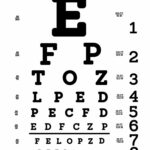Experiencing shortness of breath, that tightening vise around your chest, is a deeply unsettling sensation. It’s as if the very air you need to thrive is being rationed. When this occurs, a chest X-ray often becomes a crucial diagnostic tool. But what exactly does this radiological snapshot reveal? Let’s delve into the pneumonic parchment that is a chest X-ray and decipher its secrets in relation to dyspnea, or, as commonly known, shortness of breath.
A chest X-ray, at its core, is an image of your thoracic cavity, created by passing a small amount of radiation through your chest. Dense structures like bones absorb more radiation, appearing white on the X-ray film, while air-filled spaces like the lungs appear darker. This contrast allows clinicians to visualize a range of potential pathologies contributing to respiratory distress. Think of it as a grayscale tapestry, where each shade tells a story about the health of your lungs, heart, and surrounding structures.
Pneumonia: The Consolidation of Lung Tissue
Pneumonia, an infection of the lungs, is a frequent culprit behind shortness of breath. On a chest X-ray, pneumonia often manifests as areas of “consolidation.” This essentially means that the normally air-filled alveoli (tiny air sacs in the lungs) are filled with fluid, pus, or cellular debris. These consolidated areas appear as hazy, opaque patches on the X-ray. The location and extent of consolidation can help determine the type of pneumonia, such as lobar pneumonia (affecting an entire lobe of the lung) or bronchopneumonia (scattered patches throughout the lungs). Imagine these patches as unwelcome guests, squatting in the airways, disrupting the normal flow of respiration.
Pulmonary Edema: A Fluid Overload in the Lungs
Pulmonary edema, a condition where excess fluid accumulates in the lungs, can also lead to shortness of breath. This can be caused by heart failure, kidney problems, or other medical conditions. On a chest X-ray, pulmonary edema typically presents as increased whiteness throughout the lungs, particularly in the lower zones. Kerley B lines, short horizontal lines near the edges of the lungs, are a classic sign of interstitial edema (fluid in the spaces between the alveoli). The cardiac silhouette (the outline of the heart) may also appear enlarged if heart failure is the underlying cause. Picture the lungs as a sponge, gradually saturated with water, making it increasingly difficult to breathe.
Pleural Effusion: Fluid Accumulation Around the Lungs
The pleura, a thin membrane that surrounds the lungs, can sometimes accumulate fluid, a condition known as pleural effusion. This fluid buildup can compress the lung, making it harder to breathe. On a chest X-ray, pleural effusion appears as a blunting of the costophrenic angles (the sharp angles where the ribs meet the diaphragm) and a hazy opacity along the lower portion of the lung. Large effusions can completely obscure the lung, causing significant respiratory distress. It’s like having an invisible weight pressing down on the lungs, restricting their ability to expand fully.
Pneumothorax: Air Leakage into the Pleural Space
Pneumothorax, or a collapsed lung, occurs when air leaks into the space between the lung and the chest wall. This air pressure can cause the lung to collapse, leading to shortness of breath. On a chest X-ray, pneumothorax is characterized by the absence of lung markings in a particular area, with a visible line representing the edge of the collapsed lung. The affected lung appears darker than the normal lung due to the presence of air. Consider it as a deflated balloon within a box, unable to perform its vital function.
Chronic Obstructive Pulmonary Disease (COPD): A Slow and Insidious Threat
COPD, encompassing conditions like emphysema and chronic bronchitis, progressively damages the lungs, making it difficult to breathe. While a chest X-ray may not always be diagnostic in early COPD, it can reveal signs of hyperinflation (over-expansion of the lungs), flattened diaphragms, and increased lung lucency (darkness). Bullae, large air-filled spaces in the lungs, may also be visible in emphysema. The lungs become like overstretched elastic bands, losing their ability to recoil and efficiently expel air.
Lung Masses and Tumors: Shadows in the Thoracic Cavity
Lung masses or tumors can also cause shortness of breath, either by directly obstructing airways or by compressing surrounding lung tissue. On a chest X-ray, these masses appear as discrete opacities, varying in size and shape. Further imaging, such as a CT scan, is usually required to characterize the mass and determine its nature. Think of these masses as silent invaders, gradually encroaching on the lung’s territory.
Other Intrathoracic Abnormalities
Beyond these common conditions, a chest X-ray can also reveal other abnormalities that contribute to shortness of breath. These include cardiomegaly (enlarged heart), mediastinal masses (masses in the space between the lungs), and skeletal abnormalities that restrict lung expansion. The chest X-ray serves as a panoramic view of the thoracic landscape, revealing subtle clues that may otherwise go unnoticed. It’s a window into the body’s intricate machinery, allowing clinicians to identify and address the root cause of respiratory distress. The interpreter of these images must be highly qualified so they can diagnose the issues.
In summary, a chest X-ray is a valuable tool in the evaluation of shortness of breath, providing crucial information about the lungs, heart, and surrounding structures. By carefully analyzing the patterns of densities and opacities on the X-ray film, clinicians can often pinpoint the underlying cause of dyspnea and guide appropriate treatment strategies. It’s a diagnostic process that combines the science of radiology with the art of interpretation, offering a glimpse into the complex world of pulmonary health.









Leave a Comment